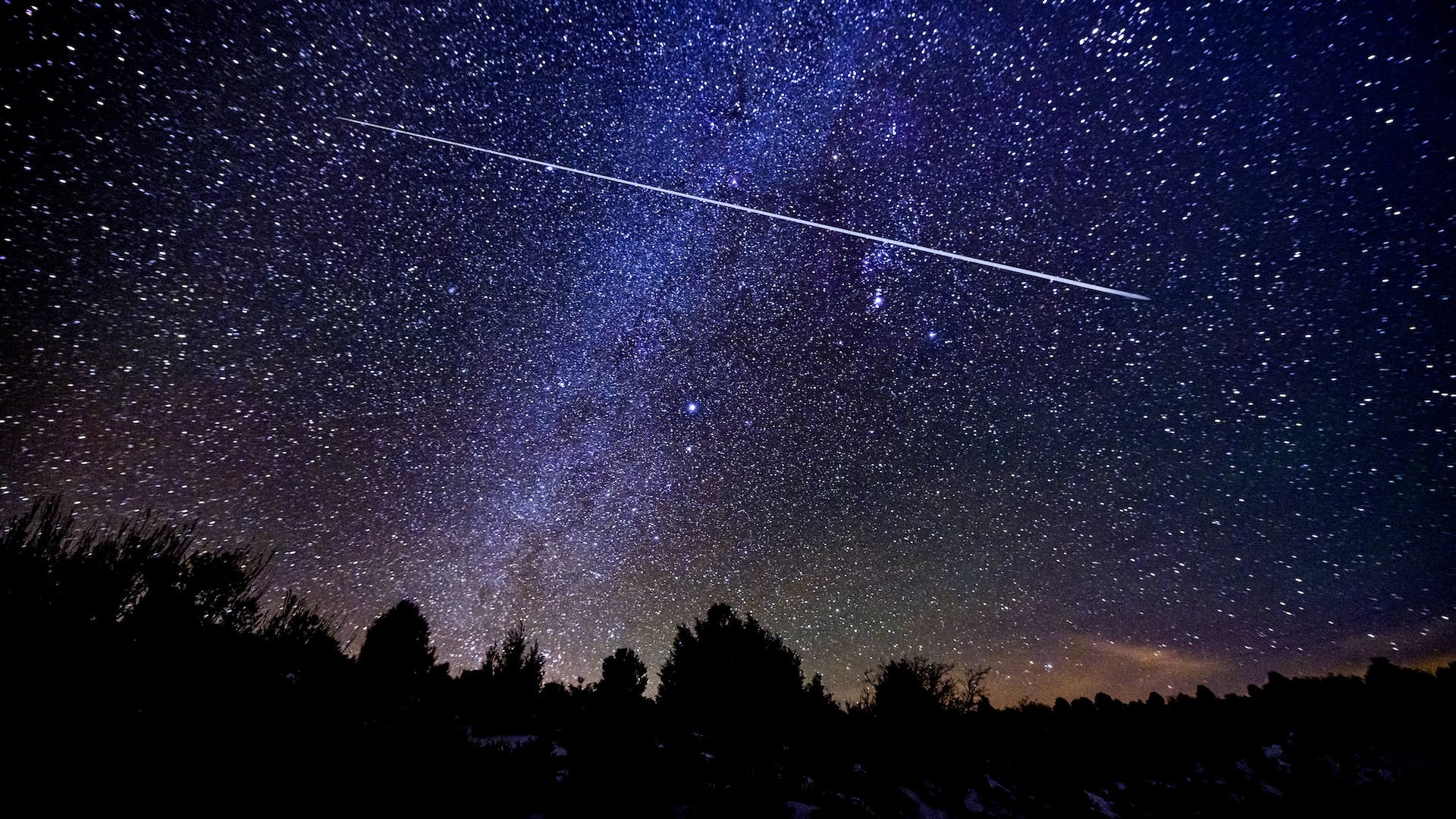Dramatic 'fireballs' expected during Draconid meteor shower this week: How to get the best views
Expect a modest-but-convenient display of "shooting stars" after sunset, with a chance of bright "fireballs," as the Draconids peak this week.

If you're out just after dark Wednesday (Oct. 8), look up for a chance to spot "fireballs" as the annual Draconid meteor shower peaks.
Although this meteor shower is predicted to produce only about 10 "shooting stars" per hour during its peak that evening, the Draconids are still a worthy skywatching event. That's because some of these meteors can be very bright and dramatic, with trails that last a second or so. It's also one of the most conveniently timed meteor shower peaks of the year for observers in the Northern Hemisphere.
While most meteor showers are at their best well after midnight, the Draconids are a rare exception. That's because, in the Northern Hemisphere sky, they appear to originate from the constellation Draco, a vast yet little-known constellation that winds its way around Polaris (the North Star), which marks Earth's north celestial pole. It's around here that the stars appear to rotate, which makes Draco circumpolar — always in the sky — as seen from the Northern Hemisphere. Most constellations rise and fall throughout the night and become highest in the sky, where the sky is darkest, late at night.
According to the American Meteor Society, the Draconids are highly variable. They can fizzle with just a few meteors or, on rare occasions, flare dramatically. With the full Harvest Moon rising early in the week, the night skies will be bleached. Therefore, only the brightest fireballs" are likely to cut through.
The source of the Draconids is Comet 21P/Giacobini-Zinner, which loops through the inner solar system every 6.5 years, leaving bits of icy debris in its wake.
There are also other reasons to look north on Oct. 8. There's a possibility of intense northern lights, with displays twice as likely during early October in the wake of the equinox on Sept. 22. The equinox causes Earth's magnetic field and the solar wind to align, making geomagnetic storms more common and more intense, according to EarthSky. For the latest predictions, which can change suddenly, keep an eye on NOAA's 30-minute forecast and skywatching sites like SpaceWeatherLive.com.
Oct. 8 is also about the right time to begin looking for two comets just after sunset: Comet Lemmon (C/2025 A6) in the northern sky, and Comet SWAN R2 (C/2025 R2) in the west. Both comets will be visible with a pair of skywatching binoculars or a backyard telescope, and it may even be possible to spot Comet Lemmon with unaided eyes in the coming days.
Get the world’s most fascinating discoveries delivered straight to your inbox.

Jamie Carter is a freelance journalist and regular Live Science contributor based in Cardiff, U.K. He is the author of A Stargazing Program For Beginners and lectures on astronomy and the natural world. Jamie regularly writes for Space.com, TechRadar.com, Forbes Science, BBC Wildlife magazine and Scientific American, and many others. He edits WhenIsTheNextEclipse.com.
You must confirm your public display name before commenting
Please logout and then login again, you will then be prompted to enter your display name.
